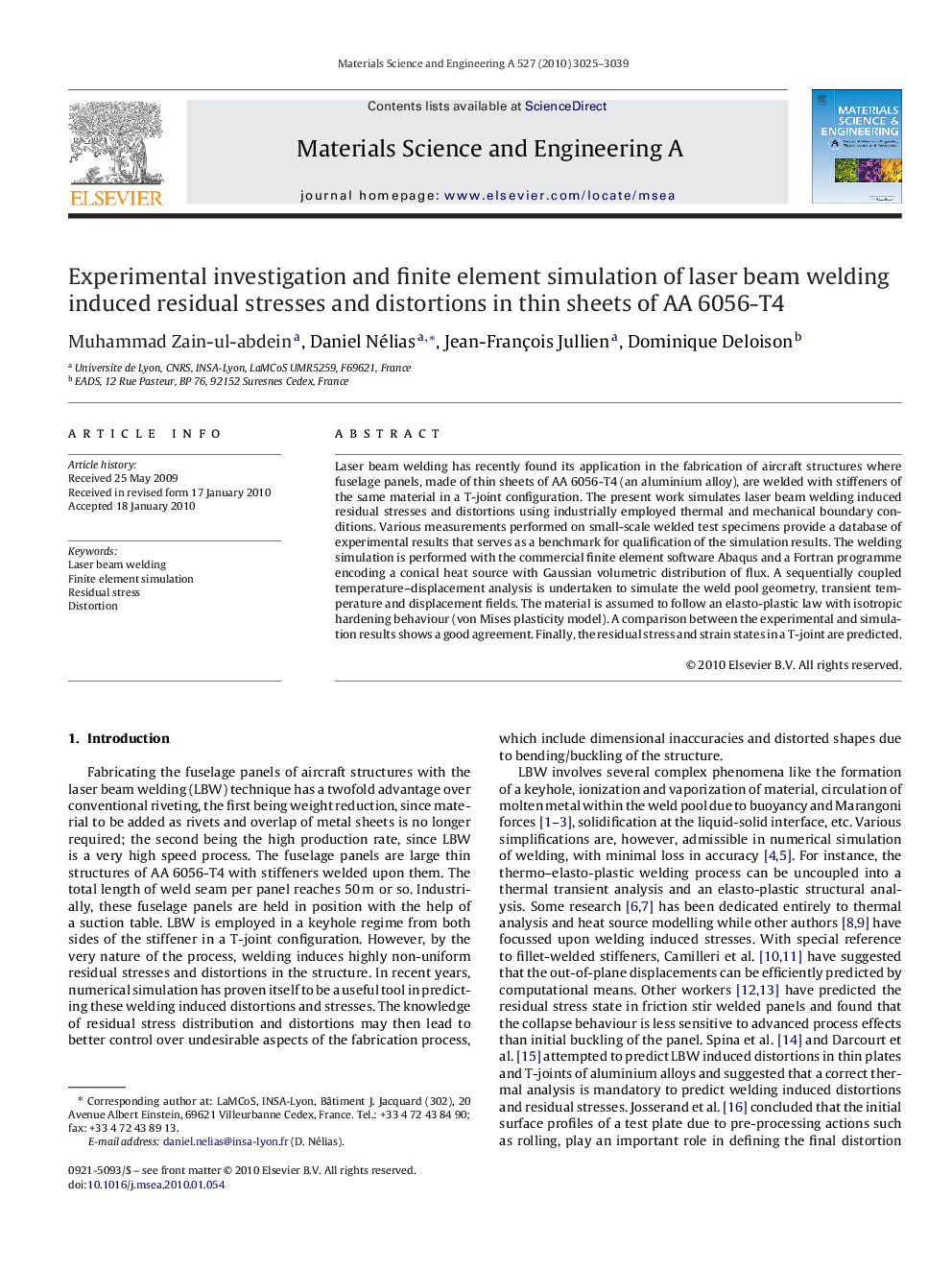| کد مقاله | کد نشریه | سال انتشار | مقاله انگلیسی | نسخه تمام متن |
|---|---|---|---|---|
| 1580364 | 1001241 | 2010 | 15 صفحه PDF | دانلود رایگان |

Laser beam welding has recently found its application in the fabrication of aircraft structures where fuselage panels, made of thin sheets of AA 6056-T4 (an aluminium alloy), are welded with stiffeners of the same material in a T-joint configuration. The present work simulates laser beam welding induced residual stresses and distortions using industrially employed thermal and mechanical boundary conditions. Various measurements performed on small-scale welded test specimens provide a database of experimental results that serves as a benchmark for qualification of the simulation results. The welding simulation is performed with the commercial finite element software Abaqus and a Fortran programme encoding a conical heat source with Gaussian volumetric distribution of flux. A sequentially coupled temperature–displacement analysis is undertaken to simulate the weld pool geometry, transient temperature and displacement fields. The material is assumed to follow an elasto-plastic law with isotropic hardening behaviour (von Mises plasticity model). A comparison between the experimental and simulation results shows a good agreement. Finally, the residual stress and strain states in a T-joint are predicted.
Journal: Materials Science and Engineering: A - Volume 527, Issue 12, 15 May 2010, Pages 3025–3039